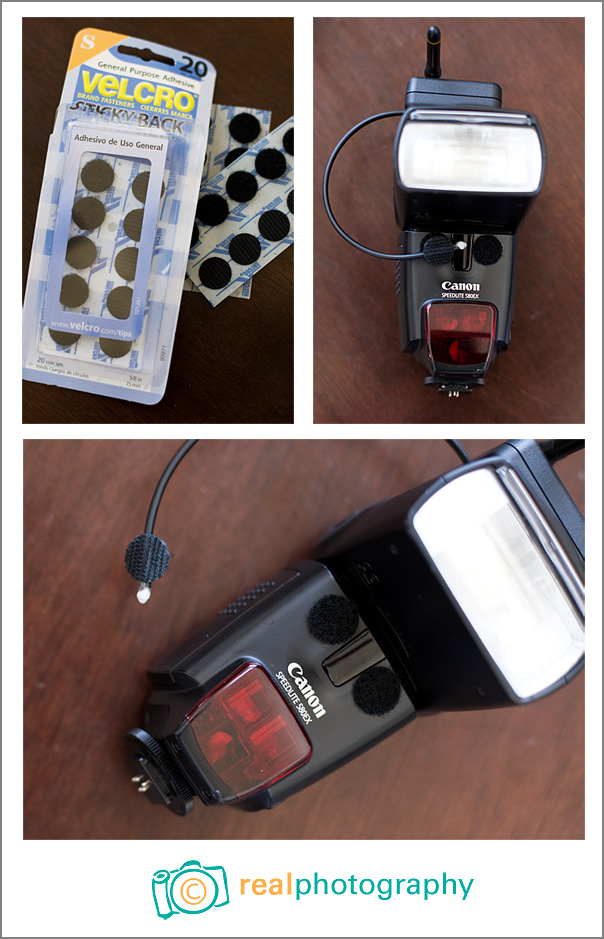RadioPopper Review
May 10, 2008
It’s intimidating to write a review about something that the Strobist has covered in a much more qualified way. But here I am, writing about it anyway, because it’s a new piece of equipment, and I was lucky enough to be in one of the first batches of people receiving it! (And because I think I came up with a clever “fix” for something I read someone complaining about.)
Who needs to read a review about RadioPoppers?
Professional photographers and seriously dedicated enthusiasts. This is definitely a blog post to skip if photography equipment doesn’t get you all weak in the wallet and you never plan on having more than one external flash.
What are RadioPoppers?
They go to great length on their website to avoid saying it, but I will. They are a newer cooler version of Pocket Wizards.
Pocket Wizards allow you to trigger many flashes when you take a picture. The downside is that you have to set the flashes manually–you can’t use the ETTL system. But the downside of using the ETTL system and not Pocket Wizards is that ETTL uses “line of sight”–your flashes have to see each other for it to work. So if you want to light up the wall behind a bride by sticking a flash behind her, it won’t work. If your flash can’t see the other flash, you’re dead in the water.
RadioPoppers solve that. You get to use ETTL, but the signal travels by radio, so you don’t have to worry about line-of-sight.
RadioPoppers are also fantastic for high speed sync issues.
My Genius Fix
The downside that Nic spotted (and I had read) was that it becomes sort of important that your receiver units stay on their flash because while the main box part is held on with velcro, the optical receiver (which I will call the “long tubey thing”) needs to be stuck to the appropriate part of the flash. RadioPopper recommends gaffers tape, which you could take off without gunking up your flash, but it would be inconvenient to do that every time you want to use it.
My solution? More velcro.

Adhere two sticky-back velcro tabs around the long tube thingy, put two other sticky-back velcro tabs on your flash, and voila! A way to easily remove and attach the radio popper receivers.
It has the added benefit of being a little more flexible–as you rotate your flash head around, you don’t need to worry about the long tubey thing (optical receiver) getting too tight. You can just attach it to whichever side works best.
Bottom Line: RadioPoppers are exactly what I was looking for as a solution for wedding and portrait work. Allows me to use ETTL without the restrictions of line-of-sight. And with a little extra velcro, they’re even better.
Posted in News


Comments
Actually, you can use a lightsphere with it on top--you just have to mount it a little far back. I use a lightsphere and was able to put it on the flash easily and there is still room to spare before the velcro starts.
Steve May 23, 2008 at 02:05Trina asked: "Can you still use diffusor on your flash? ie Gary Fong’s?" Sure - does not extend down to interfere with the optical fiber. You velcro the receiver onto another part of the body of the flash. Clearly, if you velcro it onto the top of the flash, you will not be able to use a Fong (or most other) light modifier. "...can you use it on mainlights etc or only on the portable units?" Not unless you have studio lights that are ETTL-capable; I don't know of any that are. ETTL flash units are dedicated portable flash units that have been made to work with a specific manufacturer's camera and TTL exposure system.
Trina May 13, 2008 at 09:12Can you still use diffusor on your flash? ie Gary Fong's? What about in the studio, can you use it on mainlights etc or only on the portable units? Thanks!
Rob May 13, 2008 at 11:57Neat idea!! I will try this with the SB800 and the SU800 and give you an update.
Colorado Springs Wedding Photographer May 12, 2008 at 06:20(If concerned about leaving the sensor uncovered, you could put velcro on a piece of black felt and use it across the area.)
Colorado Springs Wedding Photographer May 12, 2008 at 06:17They recommend covering it to avoid interference from the sun, but say in the manual that if you want to allow your flash to occasionally be triggered by other photographers (like a second shooter) using the ETTL and not radio poppers to go ahead and leave it uncovered. Without covering the sensor you just run the risk of it having interference just like when using the ETTL system (which is okay with me because I was happy with the ETTL reliability).
Jonathan May 12, 2008 at 04:29Hi, Nice solution for the sticky troublesome gaffer tape issue. But I recall RP saying that the sensor needs to be completely covered in order to rule out interference with IR signals.
Nathan Welton May 11, 2008 at 09:10I have a review here, too: http://www.dreamtimeimages.com/blog/2008/05/11/radiopoppers-review-a-trial-by-fire-field-test/ RadioPoppers rule!